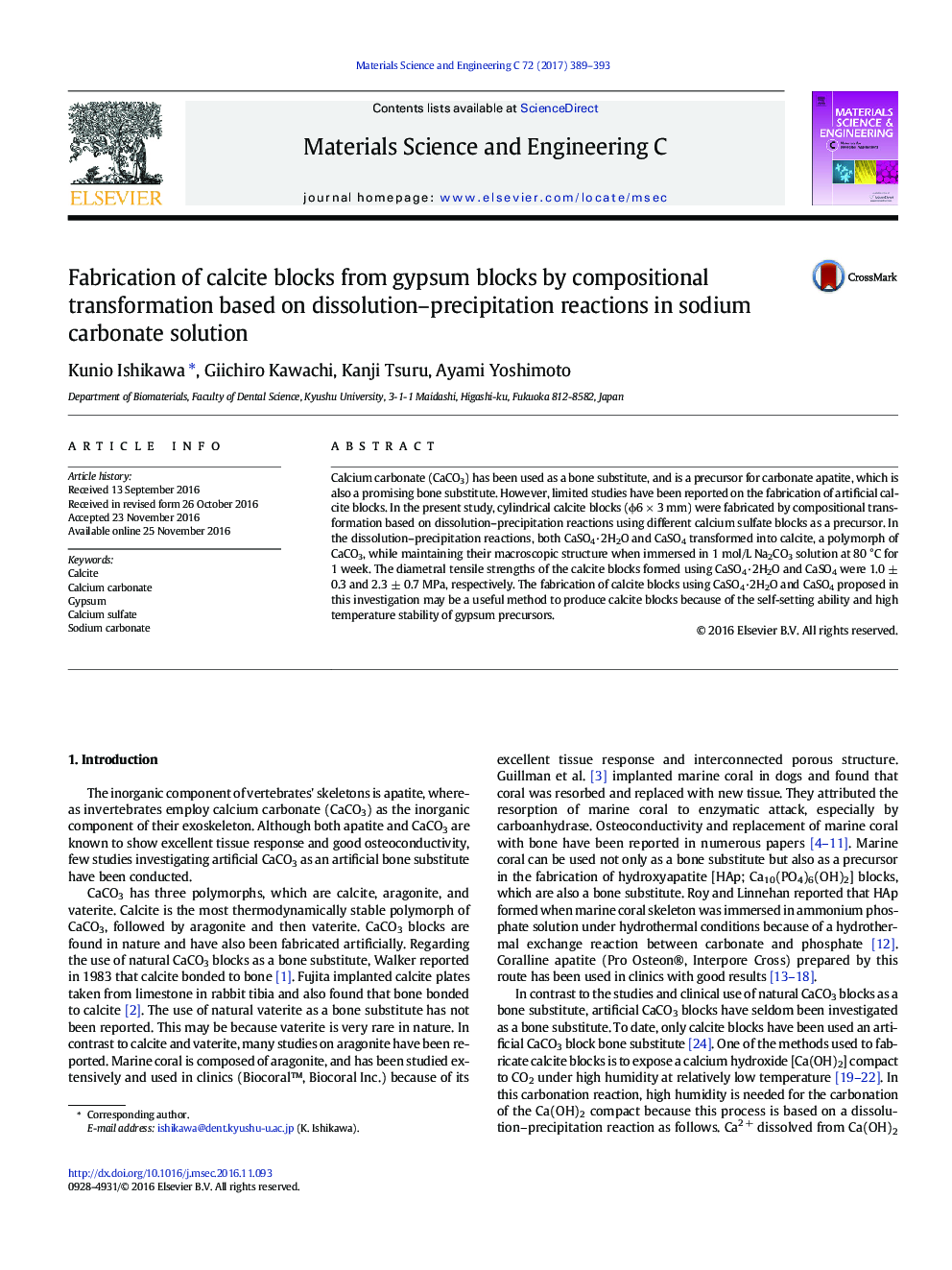| Article ID | Journal | Published Year | Pages | File Type |
|---|---|---|---|---|
| 5435217 | Materials Science and Engineering: C | 2017 | 5 Pages |
â¢CaCO3 blocks were fabricated using CaSO4·2H2O or CaSO4 blocks as precursors.â¢The compositional transformation based on dissolution-precipitation reactions.â¢The CaCO3 blocks maintained the macroscopic structure of the precursor blocks.
Calcium carbonate (CaCO3) has been used as a bone substitute, and is a precursor for carbonate apatite, which is also a promising bone substitute. However, limited studies have been reported on the fabrication of artificial calcite blocks. In the present study, cylindrical calcite blocks (Ï6 Ã 3 mm) were fabricated by compositional transformation based on dissolution-precipitation reactions using different calcium sulfate blocks as a precursor. In the dissolution-precipitation reactions, both CaSO4·2H2O and CaSO4 transformed into calcite, a polymorph of CaCO3, while maintaining their macroscopic structure when immersed in 1 mol/L Na2CO3 solution at 80 °C for 1 week. The diametral tensile strengths of the calcite blocks formed using CaSO4·2H2O and CaSO4 were 1.0 ± 0.3 and 2.3 ± 0.7 MPa, respectively. The fabrication of calcite blocks using CaSO4·2H2O and CaSO4 proposed in this investigation may be a useful method to produce calcite blocks because of the self-setting ability and high temperature stability of gypsum precursors.
